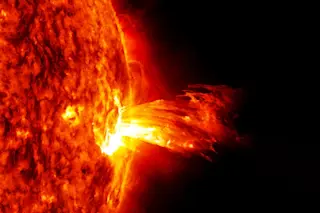Much as a teacher would be amazed to enter a preschool classroom full of college-age students, astronomers were thrown for a loop when they found fully formed galaxies in a distant corner of the universe they thought was populated with relatively small, ragged gatherings of stars. The discovery, reported in July by Karl Glazebrook of Johns Hopkins University, calls into question the prevailing theory about when and how the Milky Way and other galaxies began to take shape.
That theory holds that it took many billions of years for small groups of stars to coalesce and evolve into massive, mature galaxies. Testing the model has been tough because groupings of stars at distances of 8 billion to 11 billion light-years away from us are so faint that they tend to vanish into the background glow of Earth’s atmosphere.
Using the giant Gemini North telescope atop Mauna Kea in Hawaii and ...














